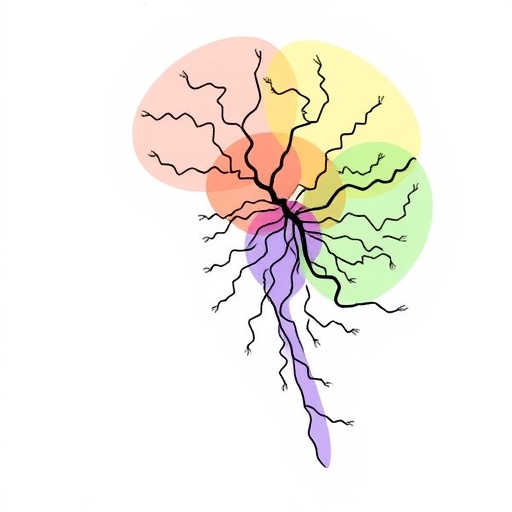In the ever-evolving field of neurodevelopmental genetics, groundbreaking research continues to unveil the intricate mechanisms behind complex disorders. A recent landmark study published in Nature Communications has shed light on a pivotal aspect of SETBP1-related pathologies, elevating our understanding of how subtle genetic variations interfere with neuronal development. This comprehensive investigation reveals that variants in the SETBP1 gene, situated outside the previously established degron region, can profoundly disrupt DNA-binding abilities, transcriptional regulation, and ultimately, neuronal differentiation, thereby culminating in a heterogeneous array of neurodevelopmental disorders.
The SETBP1 gene has long been recognized for its critical role in various cellular processes, particularly in neurodevelopment. Traditionally, pathogenic mutations clustered within a specific degron motif have dominated research interest, largely due to their correlation with Schinzel-Giedion syndrome, a severe neurodevelopmental condition characterized by developmental delay, intellectual disability, and distinctive craniofacial features. However, the study conducted by Wong, Kampen, Braden, and colleagues pioneers a new frontier by scrutinizing the impact of variants located outside this canonical degron region, demonstrating the broader spectrum of SETBP1 malfunction.
Central to the investigation is the disruption of DNA-binding capability induced by these non-degron variants. SETBP1 functions as a transcription factor, and its ability to bind to DNA sequences is essential for regulating gene expression patterns that guide neuronal differentiation. The researchers utilized advanced biochemical assays to quantify the binding affinities of mutant SETBP1 proteins, revealing that alterations outside the degron impair this fundamental function. This diminished DNA-binding capacity triggers downstream effects that reverberate through transcriptional networks, strikingly reshaping the gene expression landscape crucial for neurodevelopment.
Furthermore, the study meticulously characterizes the transcriptional consequences emanating from these impaired interactions. Employing genome-wide transcriptomic analyses, the team discovered significant dysregulation of genes pivotal to neuronal differentiation, synapse formation, and neural circuitry establishment. Notably, these aberrations do not operate uniformly; rather, the transcriptional disruptions manifest heterogeneity, mirroring the broad clinical variability observed in patients harboring such SETBP1 variants. This heterogeneity underscores the complex genotype-phenotype correlations that define neurodevelopmental disorders.
Building on these molecular insights, the authors delved into the functional impact on neuronal differentiation processes. Utilizing induced pluripotent stem cell (iPSC) models derived from patient samples and genome-edited lines, they demonstrated that variants outside the degron region impair the formation and maturation of neurons. Differentiated neuronal cultures exhibited altered morphology, reduced neurite outgrowth, and decreased expression of mature neuronal markers, indicating a profound developmental delay at the cellular level. These phenotypic abnormalities provide tangible links between SETBP1 dysfunction and disrupted neurodevelopment.
The discovery that non-degron variants of SETBP1 contribute to a heterogeneous neurodevelopmental disorder expands the diagnostic landscape for clinicians and researchers alike. It challenges the conventional paradigm that pathogenicity is confined to a narrowly defined mutational hotspot and compels a reevaluation of genetic screening strategies. Comprehensive sequencing analyses inclusive of the entire coding region of SETBP1 are now indispensable for accurate diagnosis and prognostic assessments in affected individuals.
From a therapeutic perspective, these findings open novel avenues for intervention. Understanding that the perturbation of SETBP1 DNA-binding disrupts gene regulatory networks suggests potential targets for molecular therapies aimed at restoring or compensating for lost function. Epigenetic modulators, gene editing approaches, or small molecules designed to enhance transcription factor activity might yield promising strategies to ameliorate developmental deficits in patients.
Moreover, the research highlights the importance of integrating multi-dimensional methodologies in unraveling complex genetic conditions. By combining biochemical characterization, transcriptomics, and advanced stem cell modeling, the investigators provide a holistic view of SETBP1 variant pathogenicity that transcends simple genotype-phenotype associations. Such integrative approaches set new standards for future studies of transcription factor-related neurodevelopmental disorders.
This pioneering work also prompts deeper inquiries into the fundamental biology of SETBP1. The precise molecular mechanisms by which variants outside the degron alter DNA interaction dynamics remain an area ripe for exploration. Structural biology techniques, including crystallography and cryo-electron microscopy, could elucidate conformational changes induced by these mutations, offering molecular blueprints for targeted drug design.
In addition, the phenotypic heterogeneity observed necessitates refined classification frameworks to better capture the clinical spectrum associated with SETBP1 variants. Detailed phenotyping and natural history studies will be critical to delineate subtypes, understand prognosis, and tailor interventions accordingly. Collaborative networks and patient registries will play pivotal roles in aggregating data to tackle these challenges.
Intriguingly, the study’s insights may have broader implications beyond SETBP1-associated disorders. Transcription factors with modular domains similar to SETBP1 might also harbor non-traditional pathogenic variants affecting DNA binding, suggesting a generalizable paradigm in neurodevelopmental genetics. This realization encourages the field to consider non-hotspot mutations seriously, potentially redefining mutation pathogenicity criteria.
Ultimately, this impactful research exemplifies how precision medicine can evolve through deeper mechanistic understanding of genetic contributions to disease. By illuminating how specific disruptions in gene regulation translate into developmental pathologies, scientists move closer to personalized therapeutic strategies designed to modify disease trajectories at their genetic roots.
As research continues to unravel the complexities of SETBP1 and associated pathways, the neuroscience community anticipates transformative advances in diagnosis, treatment, and patient care. The study by Wong and colleagues not only broadens scientific knowledge but also kindles hope for families affected by these challenging disorders, paving the way for a future where neurodevelopmental disabilities may be mitigated or prevented through targeted molecular intervention.
In the expanding narrative of human genetics, this investigation stands as a testament to the power of integrative research. It bridges molecular biology, clinical medicine, and therapeutic innovation, underscoring the vital importance of studying gene function beyond conventional boundaries. Such endeavors promise to revolutionize how we comprehend and combat complex neurodevelopmental diseases.
In conclusion, the elucidation of SETBP1 variants outside the degron region as critical disruptors of DNA-binding and neuronal differentiation marks a paradigm shift in understanding neurodevelopmental disorders. This comprehensive study not only redefines the mutational landscape of SETBP1 but also offers a robust framework for future explorations into gene regulation, therapeutic development, and personalized medicine, signaling exhilarating prospects for neuroscience and patient care alike.
Subject of Research: Disruption of DNA-binding, transcription, and neuronal differentiation caused by SETBP1 gene variants outside the degron region leading to heterogeneous neurodevelopmental disorders.
Article Title: SETBP1 variants outside the degron disrupt DNA-binding, transcription and neuronal differentiation capacity to cause a heterogeneous neurodevelopmental disorder.
Article References:
Wong, M.M.K., Kampen, R.A., Braden, R.O. et al. SETBP1 variants outside the degron disrupt DNA-binding, transcription and neuronal differentiation capacity to cause a heterogeneous neurodevelopmental disorder. Nat Commun 16, 9021 (2025). https://doi.org/10.1038/s41467-025-64074-x
Image Credits: AI Generated
Tags: cellular processes in neurodevelopmentcomplex disorders geneticsDNA-binding disruptiongenetic variations in neurodevelopmentNature Communications study findingsneurodevelopmental disorders researchneurogenetic pathologiesneuronal differentiation mechanismsnon-degron variants impactSchinzel-Giedion syndrome connectionSETBP1 gene variantstranscriptional regulation in neurodevelopment





